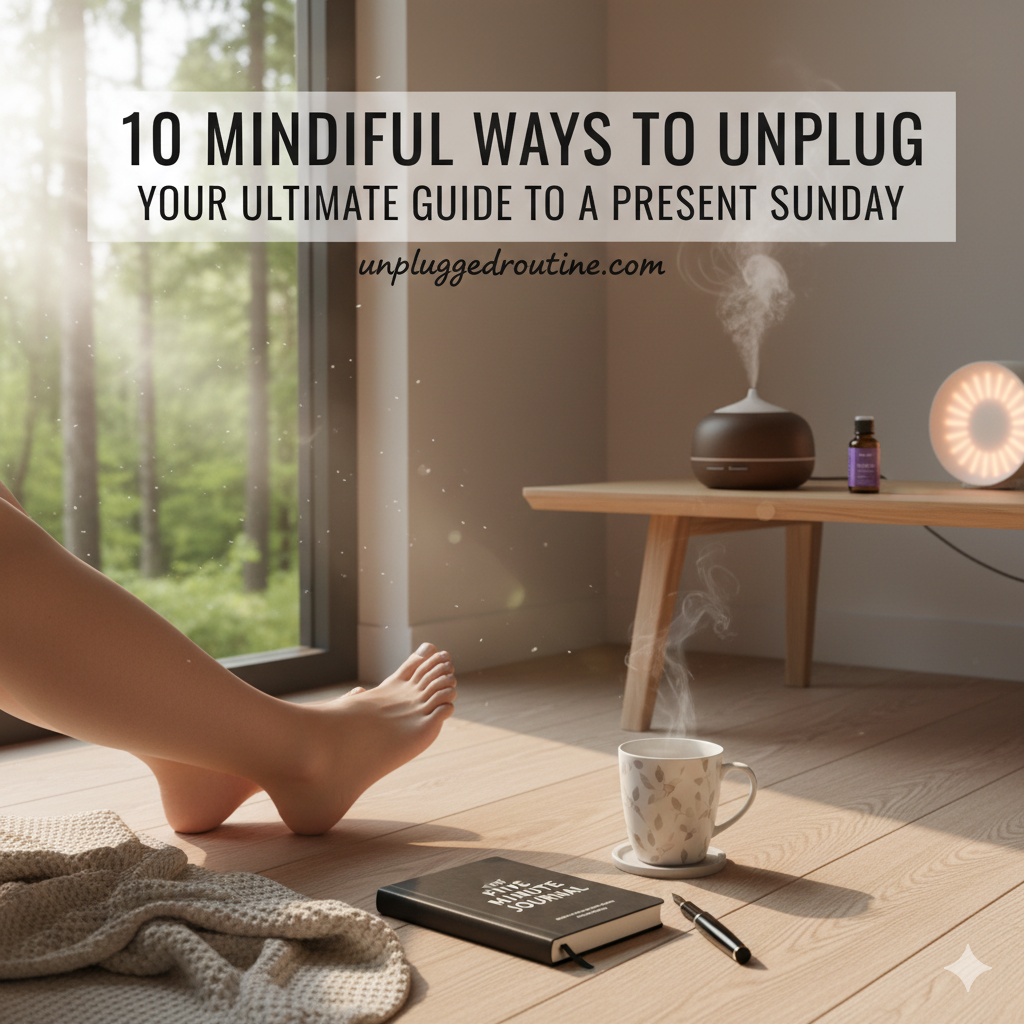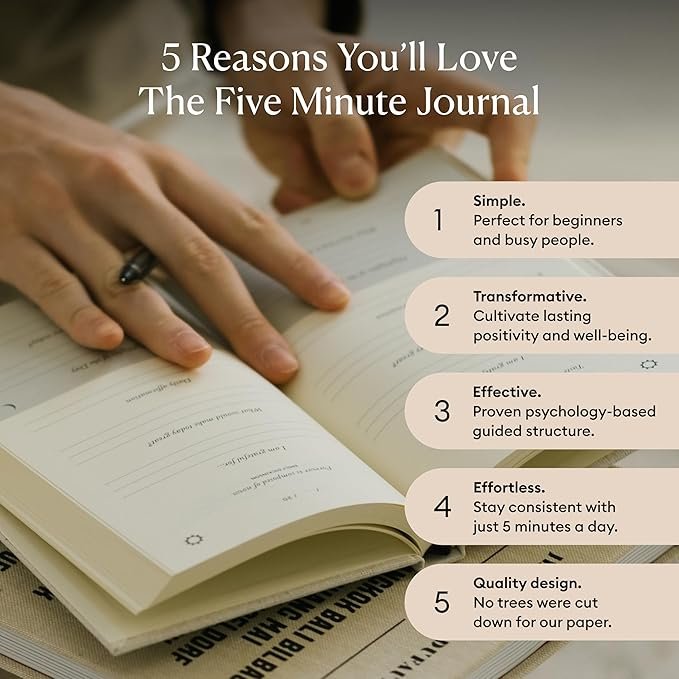Do you ever feel like your Sundays zip by in a blur, leaving you feeling just as stressed and unrefreshed as you were on Friday? In our constantly connected world, slowing down and truly savoring the moment can feel like an impossible task. But what if I told you that with a few simple shifts, you could transform your Sundays into a sanctuary of peace, presence, and genuine well-being?
Welcome to UnpluggedRoutine.com, where we believe in the power of intentional living. Today, we’re diving deep into “Mindful Sunday: How to Slow Down and Be Fully Present.” This isn’t just about relaxing; it’s about reclaiming your time, reconnecting with yourself, and setting a positive tone for the week ahead.
The Sunday Scaries: Why We Need a Mindful Shift
Before we jump into the “how,” let’s acknowledge the “why.” Many of us experience the dreaded “Sunday Scaries” – that creeping anxiety as the weekend winds down and the work week looms. We spend our precious Saturday catching up on chores or social commitments, and then Sunday becomes a frantic race to cram in last-minute “fun” or worry about Monday.
This constant future-focus robs us of the present. We’re either dwelling on the past week’s stresses or fretting about the next. A mindful Sunday offers an antidote, allowing us to hit pause, breathe deeply, and appreciate the richness of the now.

Understanding Mindfulness: More Than Just Meditation
Mindfulness is often associated with sitting cross-legged and chanting “Om.” While meditation is a powerful mindfulness practice, it’s just one piece of the puzzle. At its core, mindfulness is about paying attention to the present moment without judgment. It’s about noticing your thoughts, feelings, bodily sensations, and the world around you with a sense of open curiosity.
On a Sunday, this could mean truly tasting your morning coffee, feeling the warmth of the sun on your skin, or fully engaging in a conversation without your mind wandering to your to-do list.
The Power of an Unplugged Routine
Our digital devices are incredible tools, but they can also be massive distractions, especially on a day meant for rest and rejuvenation. Notifications, endless scrolling, and the pressure to be constantly available pull us away from our immediate experience.
An “unplugged routine” doesn’t mean ditching technology forever. It means consciously choosing when and how you engage with it. For a mindful Sunday, this often translates to designated tech-free zones or periods, allowing your mind to wander freely and your senses to awaken.
Step 1: The Mindful Morning – Setting the Tone
How you start your Sunday can dictate its entire trajectory. Resist the urge to immediately grab your phone.
Hook Step: What’s the first thing you usually do when you wake up on a Sunday? If it involves a screen, let’s try something different this week!
- Delay Digital Gratification: Try not to check your phone for the first hour of your day. Let your mind wake up naturally.
- Gentle Awakening: Instead of an abrupt alarm, try waking up with natural light or a gentle alarm sound.
- Hydrate Mindfully: Before coffee, drink a glass of water. Notice its coolness, how it feels as you swallow.
- Stretch and Breathe: Spend 5-10 minutes gently stretching your body. Focus on your breath, inhaling deeply and exhaling slowly.
- Morning Pages (Optional but Powerful): If you’re feeling inspired, try Julia Cameron’s “Morning Pages” – three pages of stream-of-consciousness writing to clear your mind.
Step 2: Nourish Your Body Mindfully
Food isn’t just fuel; it’s an experience. On your mindful Sunday, transform your meals into an act of presence.
Hook Step: When was the last time you truly tasted your food, rather than just eating it?
- Conscious Cooking: If you cook, engage all your senses. Smell the ingredients, notice the textures, hear the sizzling.
- Slow Eating: Put your fork down between bites. Chew slowly, savoring each flavor. Pay attention to how your body feels as you eat – are you truly hungry? When are you satisfied?
- Tech-Free Table: Make meal times a screen-free zone. This allows for more meaningful conversation if you’re with others, or deeper self-connection if you’re alone.
- Mindful Snacking: If you snack, choose whole foods and really enjoy them, rather than mindlessly munching while distracted.
Step 3: Connect with Nature – The Ultimate Grounding Practice
Nature has a remarkable ability to calm our nervous systems and bring us into the present moment.
Hook Step: How long has it been since you truly felt the earth beneath your feet?
- Take a Walk: It doesn’t have to be a strenuous hike. A gentle stroll in a local park, around your neighborhood, or in your backyard can work wonders.
- Engage Your Senses: As you walk, notice the sights – the changing leaves, the patterns in the clouds. Listen to the sounds – birds chirping, wind rustling through trees. Feel the air on your skin.
- “Forest Bathing” (Shinrin-yoku): Even if you’re not in a forest, the principle is the same: immerse yourself in the atmosphere of nature. Stop, breathe, and simply be in its presence.
- Gardening: If you have a garden, spend some time tending to your plants. Feel the soil, watch the growth.
Step 4: Creative Flow – Unleash Your Inner Artist
Engaging in a creative activity can be a profoundly mindful experience, as it often requires your full attention.
Hook Step: What creative pursuit did you love as a child but haven’t touched in years? Now’s the time!
- Art and Craft: Drawing, painting, knitting, pottery, writing, playing a musical instrument – choose something that sparks joy.
- Journaling: Use this time to reflect on your week, your feelings, or your aspirations without judgment.
- Photography: Go for a walk with your camera (or phone camera, but put it on airplane mode!) and look for beauty in ordinary things.
- Cooking or Baking: Approach it as an art form, experimenting with flavors and presentations.
Step 5: Mindful Movement – Tune Into Your Body
Movement isn’t just exercise; it’s an opportunity to connect with your body’s sensations and release tension.
Hook Step: How does your body really feel today? Let’s explore that.
- Yoga or Tai Chi: These practices are inherently mindful, linking breath with movement. Many free online classes are available.
- Dancing: Put on your favorite music and just let your body move freely without worrying about how it looks.
- Conscious Walking: Even during a regular walk, focus on the sensation of your feet hitting the ground, the swing of your arms, and your breath.
- Body Scan Meditation: Lie down and systematically bring your attention to each part of your body, noticing any sensations.
Step 6: Declutter and Organize Mindfully
A cluttered space can often lead to a cluttered mind. Spend some time tidying, but do it with intention.
Hook Step: Do you ever feel overwhelmed just looking at a messy corner of your home? Let’s tackle it with calm.
- One Area at a Time: Don’t try to clean your entire house. Pick one drawer, one shelf, or one small area.
- “Spark Joy” Principle: As you pick up each item, ask yourself if it “sparks joy,” as Marie Kondo suggests. If not, consider letting it go.
- Focus on the Task: Feel the texture of the objects, hear the sounds of things being put away. Let the task fully absorb your attention.
- Create Space: As you declutter, you’re not just organizing physical items; you’re creating mental space.
Step 7: Deep Connection – With Yourself or Others
Sundays are perfect for fostering meaningful connections, whether with loved ones or with your inner self.
Hook Step: When was the last time you had a truly present conversation, without distractions?
- Meaningful Conversations: Put away phones and truly listen when talking to family or friends. Ask open-ended questions and be fully engaged.
- Self-Reflection: Spend time with your journal, reflecting on your week, your values, or what truly matters to you.
- Acts of Kindness: Perform a small act of kindness, for someone else or even for yourself. Giving can be incredibly grounding.
- Reading: Dive into a book, magazine, or article that genuinely interests you. Let your mind be absorbed by the story or information.
Step 8: Practice Gratitude – The Heart of Mindfulness
Gratitude shifts your focus from what’s lacking to what’s abundant, immediately bringing you into a more positive present state.
Hook Step: What’s one tiny, often overlooked thing you’re grateful for right now?
- Gratitude Journal: Dedicate a few minutes to writing down things you’re thankful for. Be specific.
- Mental Gratitude Scan: As you go about your day, mentally note three things you appreciate. It could be your comfy chair, a warm drink, or a friendly face.
- Express Gratitude: Tell someone you appreciate them. A simple “thank you” can brighten their day and yours.

Step 9: Mindful Transition to Evening
Just as important as starting your Sunday mindfully is ending it with intention. This helps prevent the Sunday Scaries from creeping back in.
Hook Step: How do you typically wind down on a Sunday night? Is it setting you up for peaceful sleep?
- Digital Sunset: Aim to turn off screens an hour or two before bed.
- Evening Routine: Establish a calming ritual: a warm bath, reading a physical book, gentle stretching, or listening to soothing music.
- Reflect, Don’t Ruminate: Briefly reflect on your Sunday – what moments did you enjoy? What did you learn? Avoid replaying worries about the week ahead.
- Prepare for Monday (Briefly): Lay out your clothes for Monday, pack your lunch, or make a brief to-do list. This small act of preparation can alleviate morning stress.
Step 10: Embrace Imperfection – The Mindful Approach to “Failure”
Here’s the secret: your mindful Sunday won’t be perfect every week. There will be distractions, sudden demands, and moments when you lose your presence. And that’s perfectly okay.
Hook Step: What if the goal wasn’t perfection, but simply trying?
- Non-Judgment: When your mind wanders, gently guide it back. Don’t criticize yourself. That’s part of the practice.
- Start Fresh: If a moment or an hour goes awry, simply acknowledge it and start fresh with the next moment.
- Learning Opportunity: Each distraction is an opportunity to practice bringing your attention back to the present.
- Consistency Over Intensity: It’s better to practice a little bit of mindfulness every day than to aim for one “perfect” mindful Sunday and then give up.
Mindful Sunday: Your Path to a More Peaceful Week
Adopting a mindful Sunday routine isn’t about rigid rules; it’s about cultivating an intentional approach to your day of rest. It’s about recognizing that slowing down isn’t a luxury – it’s a necessity for our well-being in a fast-paced world. By choosing to be present, to engage our senses, and to nourish our minds and bodies, we don’t just have a better Sunday; we create a ripple effect that can transform our entire week.
Imagine starting your Monday feeling truly refreshed, centered, and ready to tackle challenges with a calm and focused mind. That’s the power of a Mindful Sunday.
Reclaim Your Sundays, Recharge Your Life
Taking control of your Sunday means taking control of your well-being. By incorporating these mindful practices, you can shift from a frantic, future-focused approach to one that embraces the richness of the present. This isn’t just about relaxation; it’s about intentional living, reducing stress, and setting a powerful, positive tone for the entire week ahead. It’s about creating an “unplugged routine” that truly serves you.
Your Call to Action: Ready to transform your Sundays? Pick just one of these mindful tips to try this coming Sunday. Share your experience in the comments below – what small shift made the biggest difference for you? Let’s build a community of conscious living together.